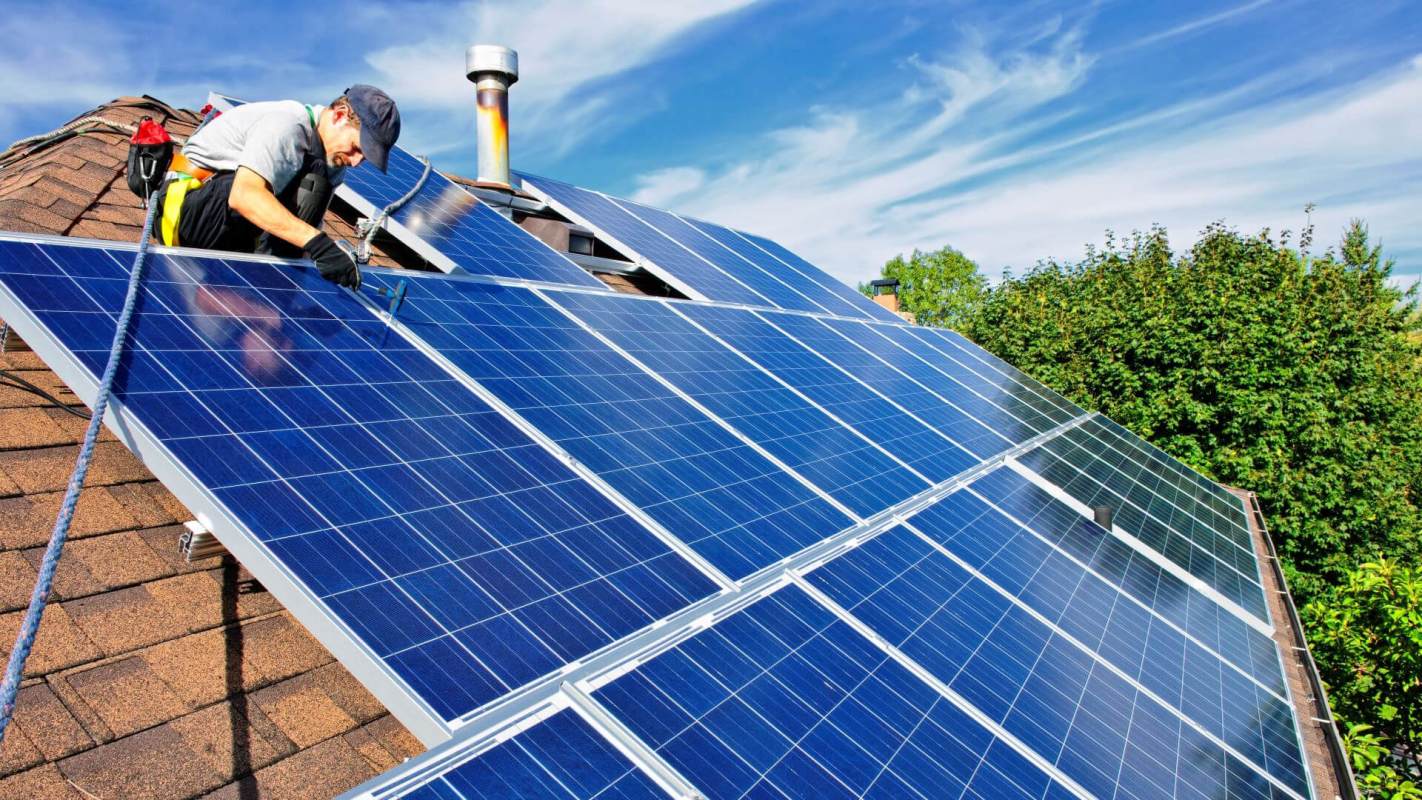Rooftop solar has many benefits for both us and the planet — it's environmentally friendly, cheaper than dirty energy sources like coal and fuel, and gives individuals energy independence from the power grid.
It also gives residences and businesses the opportunity to reduce their electricity bills and make money by selling their excess energy back to the grid.
Though they produce their own energy, people who own rooftop solar panels are still connected to the wider power grid infrastructure, as they may need to draw electricity when their home solar panels aren't creating enough power, like at night.
On the flip side, some solar panel owners don't even use all the power they generate, especially on really sunny days. In this case, they can receive cash payments or major reductions in their electrical bills for the excess power they supply back to the grid.
Having tons of small energy suppliers sending power back to the grid is a major departure from the classic energy supply model in the U.S., which relied on large centralized plants — often fossil-fuel based — to provide power to the grid.
Virtual Power Plants provide a unique solution to this new model.
What are virtual power plants?
A Virtual Power Plant (VPP) pulls together energy from smaller-scale sources of energy — like rooftop solar, wind turbines, and residential electricity storage batteries — and combines it to create a larger clean energy network that can supply power to customers 24/7, explains Aurora Solar.
VPPs use software, which acts like a control room of a traditional power plant, to accomplish this.
VPPs are a more efficient way of providing power to consumers in multiple areas, as they can draw from more power sources than individual grid operators can. They can also supply customers with a constant stream of electricity since other solar units can step up if a specific area isn't generating enough power or experiences a blackout.
VPP operators streamline and control the flow of electricity onto the grid, sharing clean power generated in a community or town with other consumers who don't produce their own power.
VPPs partner with local and regional utility companies and grid operators to supply them with power, particularly when energy demand is highest (peak demand).
It can lighten the stress on the centralized electric grid as VPPs can deploy energy from different places.
New England gets United States' first VPP
Solar company Sunrun has created the first regional virtual power plant (VPPs), combining around 5,000 home solar and battery storage systems across Massachusetts, New Hampshire, Rhode Island, and Vermont.
The plant provided power in those states over the summer months at peak demand by drawing from the electricity stored in residential solar batteries. The homes generated excess electricity, particularly between 1pm and 5pm when the afternoon sun is strongest. Using the software, Sunrun collected a total of 1.8 gigawatt-hours of electricity to feed back into the regional power network.
Sunrun partnered with New England's regional electrical grid and leveraged the sunniest days to provide a backup layer of power, reducing the power utilities' reliance on fossil fuel plants.
Energy transition gamechanger
Fossil fuel-based Peaker plants are used by utilities to provide energy when demand is highest.
VPPs lower our reliance on expensive natural gas during peak demand by adding a layer of backup power to the electricity grid.
In addition to creating planet-overheating emissions (carbon and methane), fossil fuel-based peaker power plants also create harmful pollution that can lead to respiratory issues and asthma.
Virtual power plants can relieve stress on electricity grid operators by reducing overall energy demand. Peaker plants are less efficient than solar energy generated from multiple sources and are typically located in historically disadvantaged and vulnerable communities.
What do virtual power plants mean for the future?
U.S. Energy Regulators are requiring regional grid operators to accept extra solar power coming from residential homes and businesses to improve electricity access.
VPPs can streamline this process, and the success of Sunrun shows us that multi-state energy systems will be more common in the near future.
"This is the energy system of the future and the future is not very far away," Todd Olinsky-Paul, Senior Project Director at Clean Energy States Alliance and Clean Energy Group, told E&E News.
Follow The Cool Down on Instagram and subscribe to our newsletter.








